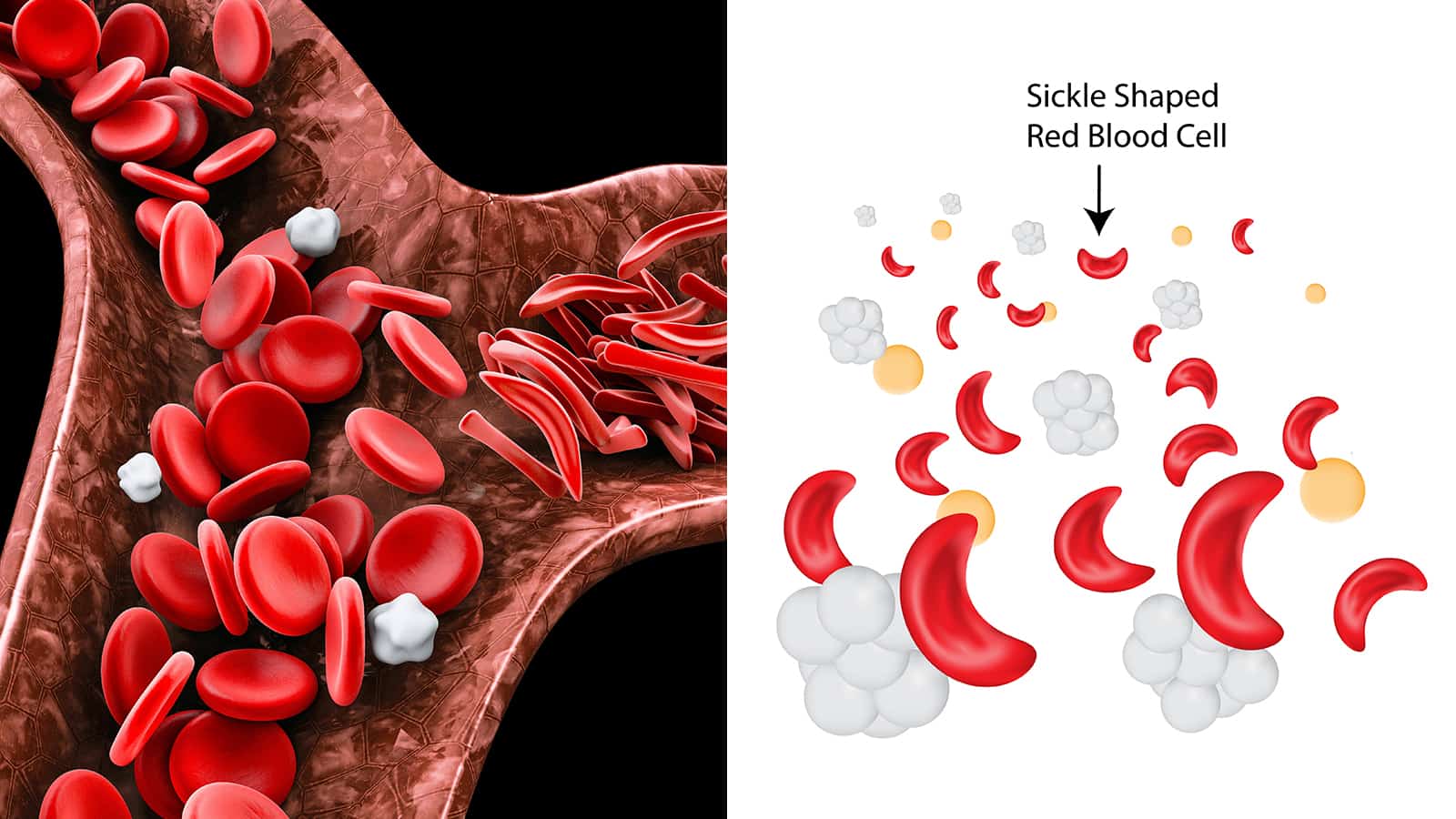Boston University researchers have discovered a new treatment for sickle cell anemia, a genetic blood disorder that causes crescent-shaped red blood cells. The disorder can result in frequent infections, pain, extreme fatigue, delayed development, and swelling of the hands and legs. Current treatments typically focus on managing symptoms and can include pain medications, antibiotics, and vaccines.
Researchers have been working on a cure for sickle cell anemia for decades. Now, the Boston University team believes they’ve stumbled upon a possible remedy. They published these findings in the New England Journal of Medicine (Biologic and Clinical Efficacy of LentiGlobin for Sickle Cell Disease/Kanter et. al).
Boston University Reveals New Treatment for Sickle Cell Anemia
Martin Steinberg, MD, professor of medicine at Boston University School of Medicine, commented on the study’s findings. He said the research marked the first successful gene therapy that adds a gene to patient blood stem cells which eliminate complications of sickle cell disease.

“Gene therapy with autologous stem cells extends the possibility of a cure to all patients without the need for immunosuppression,” explains Steinberg, who also works as a hematologist at Boston Medical Center.
Patients who participated in the study no longer showed symptoms of sickle cell anemia. However, Steinberg did say that many patients still had a shortened lifespan of their red blood cells, which could cause complications in the future. He added that for patients to agree to the costly and arduous treatment, it would need to be both permanent and curative.
“At this point we do not yet know the sustainability of the results but based on this study the prospects seem good,” he says.
Steinberg realizes that a curative or nearly curative gene therapy would not be accessible to most people with sickle cell disease worldwide.
“Most patients with this disease live in Africa and India where access to highly technological health care is limited. What is needed are more drugs that can be taken orally and increase fetal hemoglobin levels. This will have a higher likelihood of benefiting populations suffering the most from this disease.”
Another Study Prevented Sickle Cell Disease Complications for Three Years
In previous research published online in the New England Journal of Medicine, scientists performed another study on experimental gene therapy. They found that it eliminated the most serious symptoms of sickle cell anemia for at least three years in some patients. A single dose of LentiGlobin restored red blood cells to their original shape as well.
Four patients at Columbia University Irving Medical Center/New York-Presbyterian participated in the multicenter study. It marked the first to observe the long-term effects of sickle cell gene therapy. The single-dose gene therapy was given to 35 adults and adolescents with sickle cell anemia.
It corrected the shape of blood cells while also eradicating severe pain episodes, some of which can lead to organ damage. Pain stems from blockage of blood vessels when sickled red blood cells clump together. The painful episodes result in many emergency room visits and may even cause early death.
“You cannot overstate the potential impact of this new therapy,” says Markus Y. Mapara, MD, Ph.D., professor of medicine at Columbia University Vagelos College of Physicians and Surgeons and a co-author of the study. “People with sickle cell disease live in constant fear of the next pain crisis. This treatment could give people with this disease their life back. We hope this therapy will also be successful in younger patients so they can grow up without experiencing pain crises and live longer.”
A New Therapy on the Horizon
The new gene therapy for sickle cell anemia, called LentiGlobin, involves collecting blood stem cells from patients. Then, lentiviruses are introduced to transport modified copies of the beta-globin genes in stem cells. Finally, the cells get reinfused into the patient’s bone marrow and begin producing healthy red blood cells.
In the clinical trial, the sickle cell anemia therapy eliminated severe pain episodes up to 38 months after infusion. This marks the longest observation period for sickle cell gene therapy. Mapara added that unlike conventional bone marrow transplants, there’s no risk of rejection since the therapy uses the patient’s own stem cells.
However, one caveat to the treatment is that it requires high-dose chemotherapy to eradicate old stem cells and provide room for new ones. Researchers are currently investigating less harmful methods of conditioning the bone marrow before gene therapy. They’re also researching strategies to make therapies for sickle cell disease more affordable.
Still, their results are encouraging to people living with sickle cell anemia. Hopefully, many will benefit from gene therapy in the near future as the treatment becomes commercially available.
Tips for Managing Sickle Cell Anemia
Since gene therapy isn’t widely available, there currently isn’t a cure for sickle cell anemia. However, you can still take steps to manage your symptoms and reduce pain episodes:
- Take supplements. Folate is especially important since it aids in the production of red blood cells. Iron, zinc, copper, Vitamin D, and Vitamin E are also beneficial for anemic patients. However, talk with your doctor first before trying any supplements.
- Drink plenty of water. This helps improve circulation and increases oxygen in the blood.
- Avoid temperature extremes and high altitudes. Extreme heat or cold can exacerbate pain, and high altitudes have less available oxygen.
- Avoid smoking. Smoking not only decreases oxygen in the blood but also may increase the risk of pain crises.
Final Thoughts on Gene Therapy for Sickle Cell Anemia
Boston University researchers have discovered a new stem cell therapy for sickle cell anemia. The gene therapy adds a modified copy of a gene to stem cells via lentiviruses. Then, the cells are reinfused into the patient and make their way to the bone marrow, where new red blood cells are produced.
The treatment has been successful in clinical trials, but researchers say the cost will prevent access for many living with the disease. They’re currently working on less costly treatments such as medicines that people can take orally. Nevertheless, the discovery of the treatment marks a huge step toward curing sickle cell anemia.



















